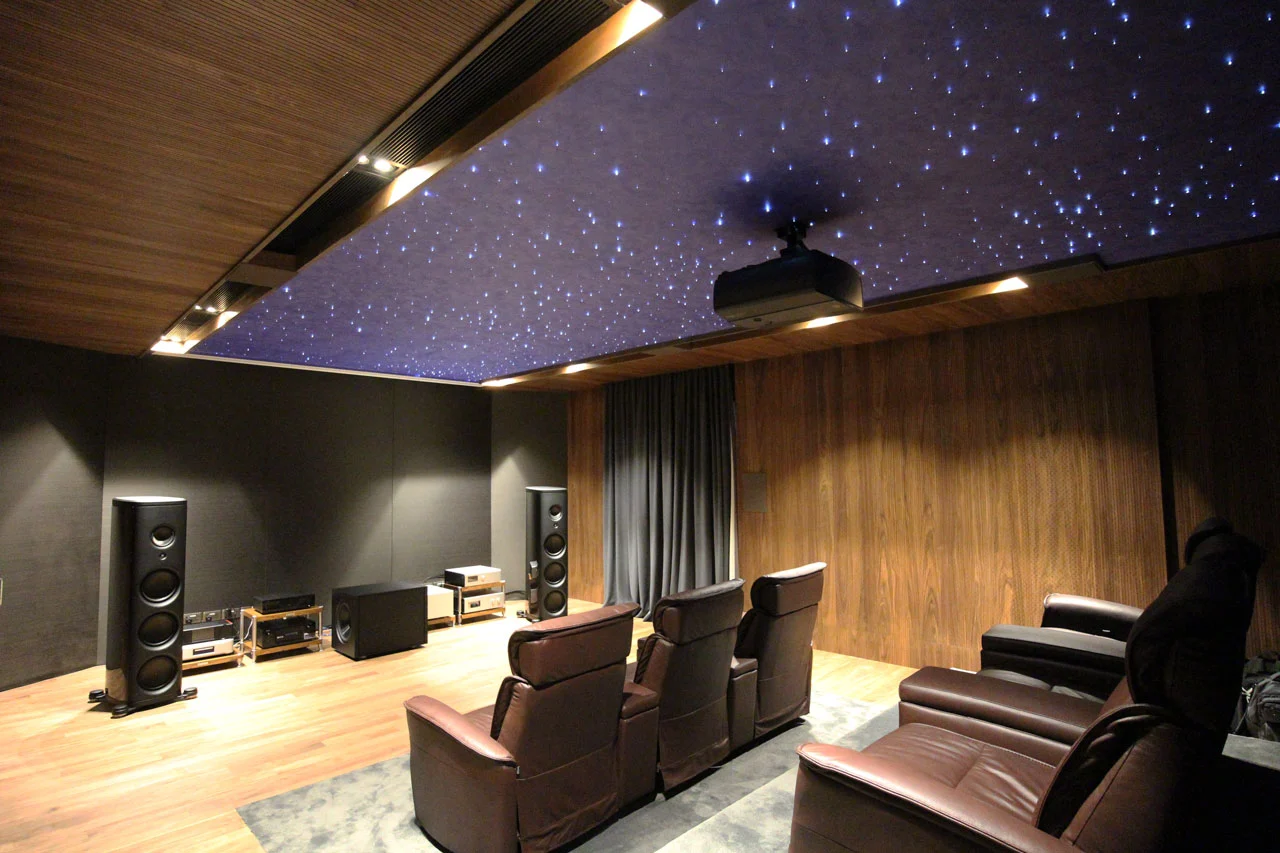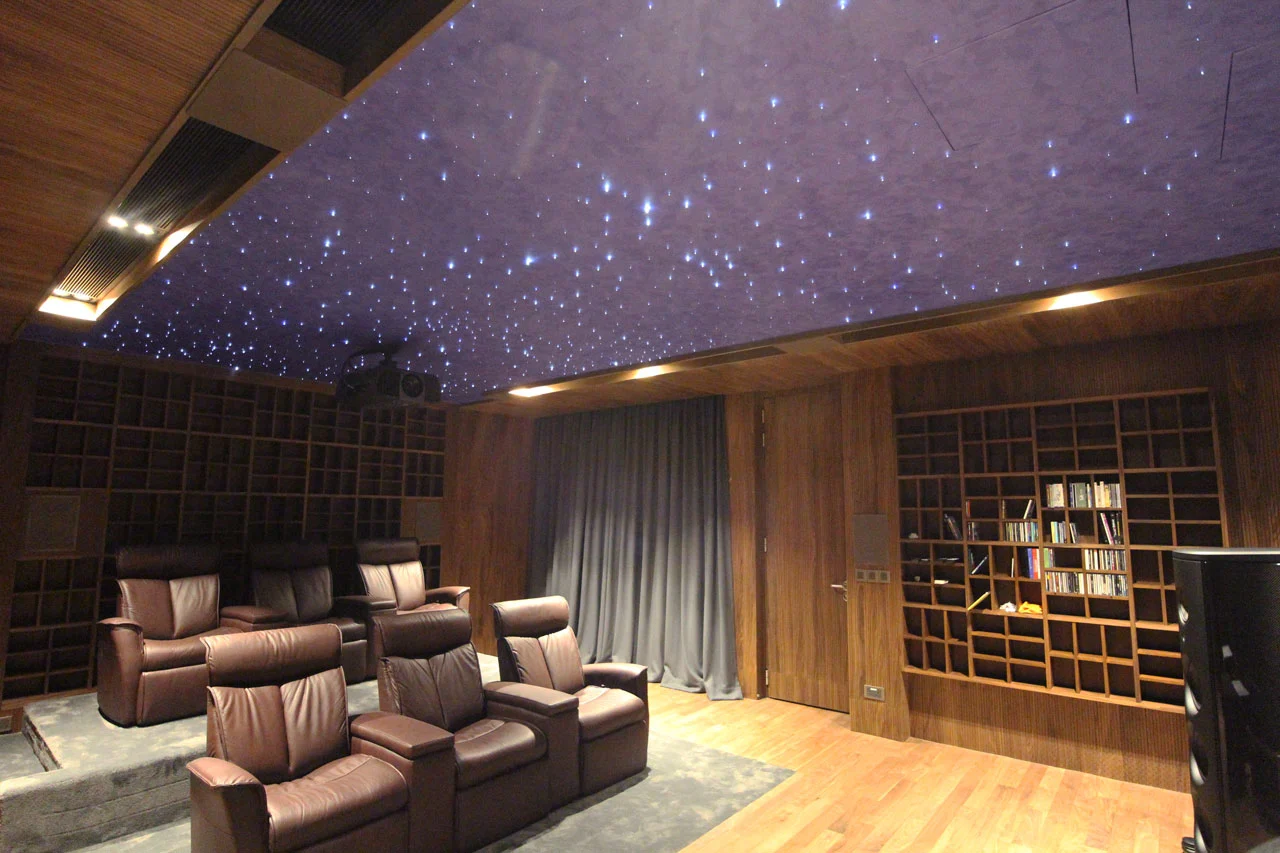Home Theatre Acoustic Design at Wan Tho Avenue: Perfecting Sound and Comfort

New and Enhanced Home Theatre Design at Wan Tho Avenue
At Wan Tho Avenue, a residential home theatre was transformed into an optimized entertainment space. With increasing demand for high-quality home entertainment, this project focused on creating a space with exceptional sound clarity, minimal noise disturbances, and an immersive audio experience. Leveraging sustainable materials and cutting-edge acoustic treatments, Timberix™ delivered a home theatre that balances aesthetics, functionality, and environmental responsibility.
By integrating timber acoustic panels, the project exemplifies how modern acoustic design can elevate home theatres while aligning with sustainable building practices¹.

Challenges in Home Theatre Acoustic Design
The primary challenges of this project included addressing sound reflections, managing noise transmission, and maintaining a visually appealing design. Home theatres often face issues with excessive reverberation, leading to muddled audio and compromised sound quality. Additionally, controlling noise leakage was critical to ensuring that the theatre’s sound system would not disturb the surrounding residential areas or other parts of the home².

Acoustic Solutions for the Wan Tho Avenue Home Theatre
Timberix™ Acoustic Wall Panels
To control reverberation and improve sound clarity, timber acoustic wall panels were installed. Made from sustainably sourced materials, these panels not only absorb unwanted sound waves but also add warmth and elegance to the theatre’s design. Their textured wooden finish complements the interior decor while serving a functional purpose.
Noise Isolation with Acoustic Insulation
Timberix™ incorporated advanced acoustic insulation in the walls and ceilings to minimize noise transmission. Mineral wool was used to provide soundproofing while maintaining fire safety and thermal insulation properties³.
Ceiling Acoustic Panels
Acoustic panels were also integrated into the ceiling to address sound reflections from overhead surfaces. These panels ensure an even sound distribution across the room, enhancing the overall audio experience.
Low VOC Materials for Healthier Spaces
To prioritize indoor air quality, low VOC adhesives and finishes were used for all acoustic treatments, ensuring a healthier environment for the homeowners and reducing the project’s environmental footprint.

Key Design Considerations for Theater Acoustics
When optimizing theater acoustics, designers and engineers must consider several critical elements, from speaker placement to wall and ceiling treatments.
Speaker Placement
Proper speaker placement ensures even sound distribution throughout the theater. Strategically positioning speakers helps prevent areas of excessive volume or poor coverage. Advanced technologies like line arrays and digital processing further enhance audio delivery, creating a tailored sound experience for every seat.
Seating Layout
Seating arrangements significantly impact how sound waves interact with the audience. Denser seating can absorb more sound, affecting the overall balance. Close seating may require sound adjustments and reflective surfaces to ensure optimal acoustics across the entire theater space.
Flooring and Stage Design
Flooring and stage materials influence sound reflection and absorption. Hard surfaces like wood or concrete can reflect sound, while carpets and acoustic flooring help absorb it. A well-designed stage can control reflections, directing sound effectively toward the audience while reducing unwanted echoes.
Wall and Ceiling Treatments
Effective wall and ceiling treatments are crucial for controlling sound reflections and reverberation. Acoustic timber panels, such as grooved or perforated designs, offer both absorption and visual appeal. These panels help manage reflections and add warmth, improving both the acoustic performance and aesthetic atmosphere of the theater.

This home theatre showcases how thoughtful acoustic design can transform residential entertainment spaces into immersive audio environments. By integrating sustainable solutions like Timberix™ acoustic panels, Aural Aid not only enhanced the sound quality and noise control but also upheld green building principles. This project reflects the growing importance of combining performance, aesthetics, and sustainability in modern acoustic design, setting a benchmark for home theatres in Singapore.
References
Timberix. (2023). Acoustic Wall Panels for Home Entertainment. Retrieved from https://www.timberix.com
Acoustic Geometry. (2022). Challenges in Home Theatre Acoustic Design. Retrieved from https://www.acousticgeometry.com
Knauf Insulation. (2023). Mineral Wool for Noise Control and Thermal Insulation. Retrieved from https://www.knaufinsulation.com
U.S. Green Building Council. (2023). Sustainable Acoustic Materials for Residential Design. Retrieved from https://www.usgbc.org
Aural-Aid. (2023). Home Theatre Acoustic Solutions in Singapore. Retrieved from https://auralaid.com/projects/
Share